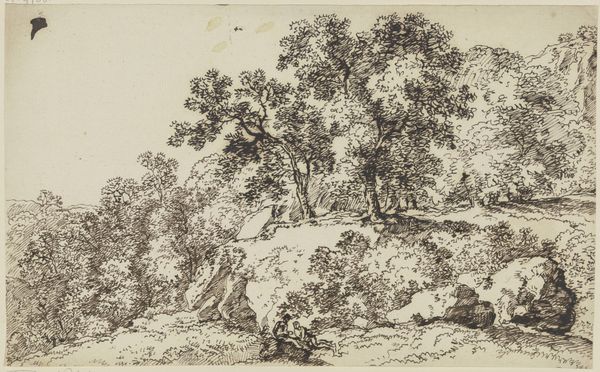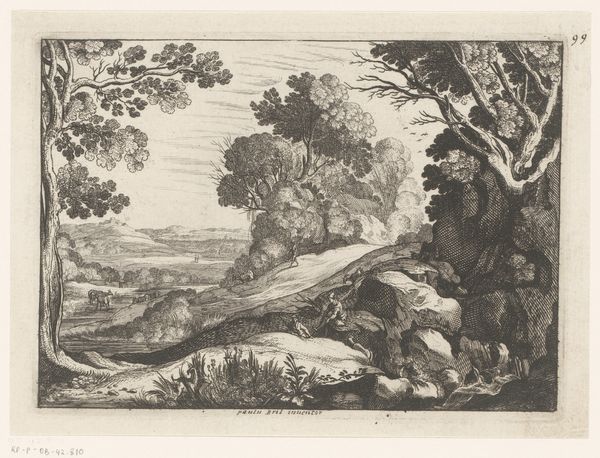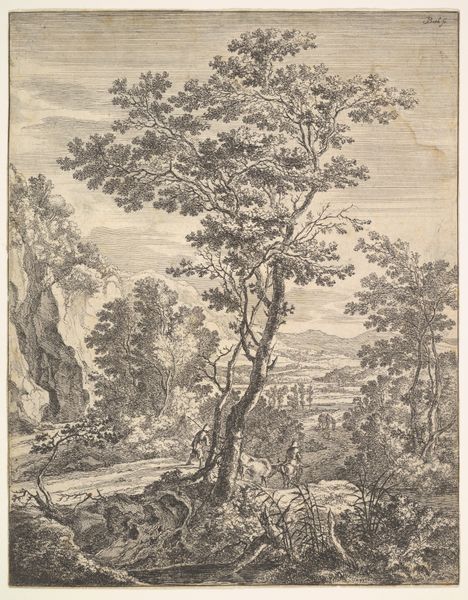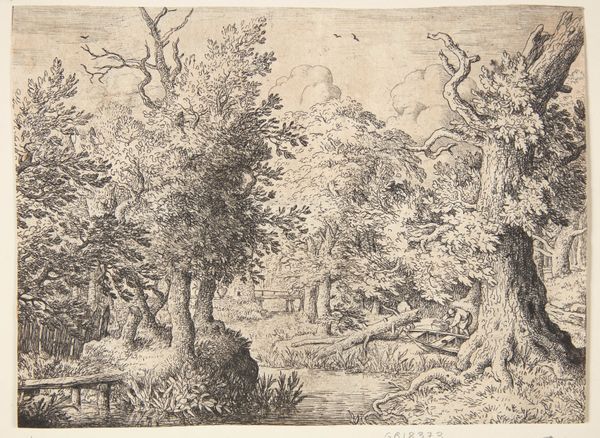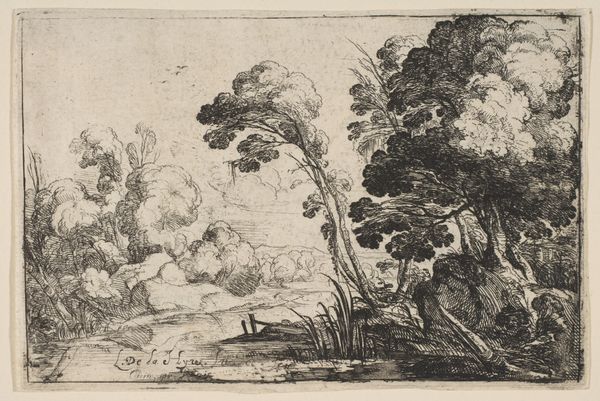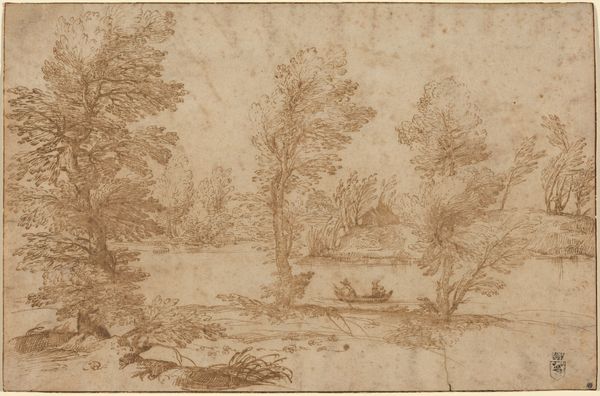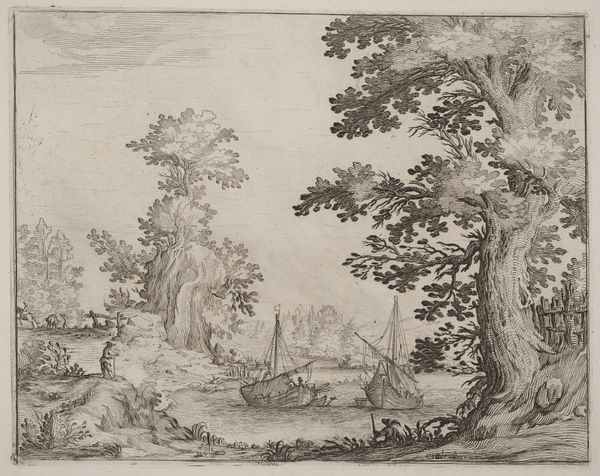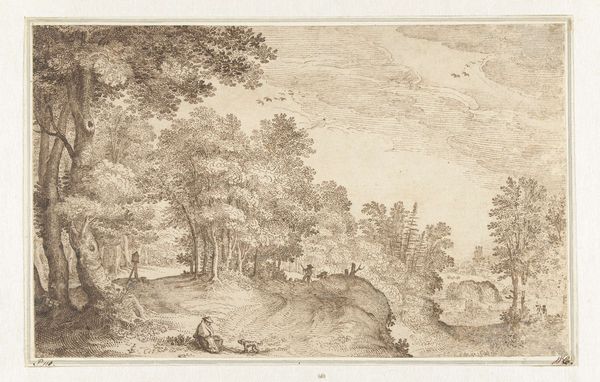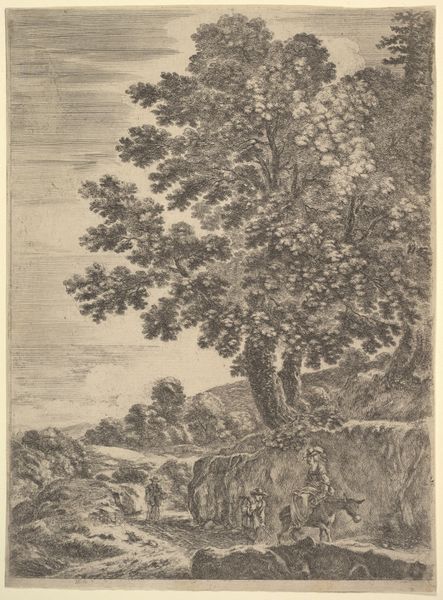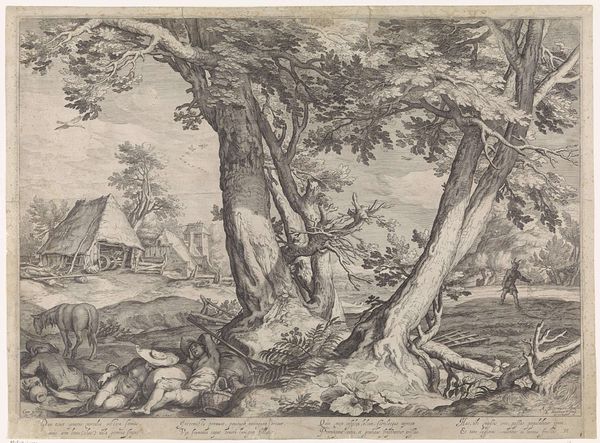
drawing, print, etching, ink
#
drawing
#
ink painting
# print
#
etching
#
landscape
#
ink
Dimensions: 10 1/2 x 14 13/16 in. (26.7 x 37.6 cm)
Copyright: Public Domain
Curator: Looking at Ercole Bazicaluva's "Landscape," created between 1633 and 1643, I find myself drawn to its intricate details. Etched in ink on paper, this print showcases Bazicaluva's mastery. It’s currently held at The Metropolitan Museum of Art. What’s your initial reaction? Editor: Well, immediately, I see the dominance of line – how the repeated etching creates a certain energy. The limited tonal range forces the viewer to really focus on the meticulous textures and patterns he builds up. It's almost architectural in its precision. Curator: Precisely! Consider the context—landscape prints like these were increasingly popular in the 17th century as modes of conveying status, taste, and documenting changing conceptions of nature and the public's relation to it. What was shown, what wasn't, who owned these...all deeply telling. Editor: Absolutely, and consider how that status comes across visually: look at the way those meticulously rendered trees define space and scale; it draws the eye through depth using delicate marks in the ink. Note, too, how the marks become less articulated with distance, guiding the viewer to focus at different depths in space. It's almost a diagram. Curator: And that ‘diagram’ is key to understanding how elites used idealized landscape imagery to define, celebrate, and also enforce their own space and place in broader society. These weren’t mere pictures, but instruments of power, and displays of wealth meant to show off their access to supposedly "untamed" nature. Editor: Right. The lack of any figures is so telling – and further underscores this! Without any human presence, the landscape takes on the role of protagonist. We become completely absorbed in this vision of pristine nature meticulously mapped in line and tonality by Bazicaluva. Curator: Indeed, and knowing this was created in a period of evolving political dynamics within Italy makes one really think about the implied politics embedded in this idealized vista of nature. Editor: I agree. Analyzing its visual mechanics while factoring in your broader context gives us, indeed, a fascinating look into landscape not just as scenery but also a coded space for expression. Thanks! Curator: My pleasure! It is incredible how history and formalism come together to show a more complete image.
Comments
No comments
Be the first to comment and join the conversation on the ultimate creative platform.


